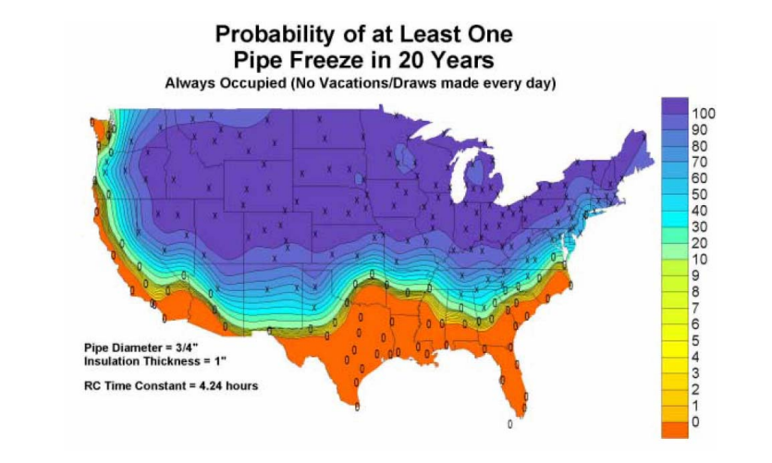Sometimes it seems like fall is never going to arrive right until the moment cold air is dropped unceremoniously into your lap, and you’re certainly not prepared for the sky high heating bills that often follow. If you want to keep your house warm this fall and winter, but you don’t want your energy bills to skyrocket, you may be surprised to discover that a little practical use of your thermostat can ensure a season of comfort — without having to break the bank paying the utility each month.
The Basics of Thermostats
Understanding how your thermostat works helps you to find ways to minimize the heating system’s energy usage in keeping the house appropriately cozy. Your thermostat is connected to your furnace, as well as your air conditioner, through electric wires. Be aware that your thermostat may also require batteries to run a timer or programmable system. Some newer models of thermostats with additional services like Wi-Fi capability may use additional electrical hookups to provide the extra power needed to run such technology.
How Does a Thermostat Work?
Your thermostat turns your HVAC system on and off. When the thermostat senses that the ambient temperature of the home has dropped to a certain level, it will trigger the furnace to turn on and send warm air throughout your home’s ductwork. However, the thermostat must be good working order, or it may not trigger your HVAC system properly. Thermostats with low battery life, a faulty temperature gauge or other problems may cause your furnace to turn on too often or not frequently enough.
Do I Need a Programmable Thermostat?
Most homes can benefit from the use of a programmable thermostat. In fact, the United States Department of Energy claims that households can save about $180 a year by using programmable thermostats, but only when used correctly. Thermostats are most efficient when you do not alter the program very often — which explains why manual thermostats are generally less efficient. If you have to change the thermostat every time you want the home to be a different temperature, you may actually change the settings more often than you would if you had a programmable thermostat with preset times that work for the way your family lives in your home.
If you want to get a new programmable thermostat, ask your HVAC technician for recommendations. The least expensive models have a number of standard settings you can program for any day and run around $20-$30. For a bit more money, you get the ability to change settings for weekdays and weekends. At the top of the market are “smart” thermostats. These thermostats are designed to maximize your energy efficiency by making it easier for you to create practical settings and view your energy usage at a glance. Some evidence shows that smart thermostats could save you 10-12 percent on your energy costs over the use of other thermostats.
How Can I Save Energy With My Thermostat?
Programmable thermostats can keep your home more comfortable by adjusting the temperature in advance of your needing it so that your home is the perfect temperature by the time you get home from work. However, overall comfort and energy consumption depends greatly on the way you use the thermostat. People who use a programmable thermostat to blast the furnace all day and all night will have more expensive utility bills because they are still using a great deal of energy.
Experts recommend that you follow these guidelines for practice thermostat usage:
- Set temperature blocks of 6-8 hours.
- Avoid temperature increases of more than 3-4 degrees between settings as this forces your furnace to actually work harder.
- Create settings you can live with, so you are not constantly adjusting the temperature.
- Consider other ways to keep warm beside the heating system.
During the winter, the best way to save money is to find a way to stay comfortable without having to set the thermostat quite as high. Add an extra blanket at night, and consider a hot drink or a warm bath as a way to warm before heading to bed. The U.S. Department of Energy estimates that you can save 5-15 percent of your home’s heating bill by setting your temperature to 56 degrees at night.
Can I Just Turn Off My Furnace When I Do Not Need It?
If you plan to take a winter vacation, or set the thermostat to a lower setting every night, there are still reasons you should keep a reasonable minimum temperature. When your home’s ambient temperature drops below 55 degrees, you risk the pipes in your plumbing freezing. Frozen pipes can lead to blocked pipes, which could stop the water from flowing to your taps. They may also burst, damaging the system and requiring expensive repairs. The U.S. Department of Energy notes that burst pipes are a normal winter occurrence here in the Greater Cincinnati area, underscoring the need to keep the thermostat to at least 55 degrees in the winter.

Should I Use a Space Heater Instead of My Furnace?
When home comfort and energy efficiency are both important to you, it makes sense to take a holistic approach to heating your home. If you keep your furnace set at a lower temperature during the winter, it may seem like it would make sense to use a space heater in your bedroom to keep the space warmer while you save energy. While using a space heater may seem like a sensible decision, there are a few caveats you should keep in mind:
-
- Space heaters are not necessarily more efficient than setting your thermostat at a comfortable temperature overnight.
- Electricity is often more expensive than an HVAC system, so an electric space heater may actually cost more.
Space heaters may have inadequate ventilation, creating a fire hazard.
- Using space heaters bypasses problems with the central heating system instead of solving them.
If you have a large home that is expensive to heat fully and you want to use a space heater on colder nights instead of heating the entire home, it may be a practical and energy-efficient decision. However, you should ask your HVAC technician about the risks associated with space heaters before you make the purchase.
What is the Most Efficient Way to Keep Warm?
Central heating has the potential to be the most efficient way to keep your home warm during the winter. You must maintain it carefully to ensure that efficiency, however. You may have a good furnace and a new, programmable thermostat with smart settings, but the rest of your HVAC system must also be in working order for you to see improved energy efficiency. For example, as much as 20 percent of your home’s heated air escapes through holes in your ductwork, so you would need to seal your ductwork for better efficiency and more comfortable rooms. Winterize your windows to maximize warmth from the sun and avoid cold air coming in from air leaks. Increase your home’s insulation to slow the process of heat loss and keep the warm air in the home longer.
When you go to change your thermostat setting to make your home more comfortable, you now know that there is a lot of careful decision-making behind it. Using your thermostat to its maximum efficacy allows you to warm your home, save energy and protect your home for another season.


